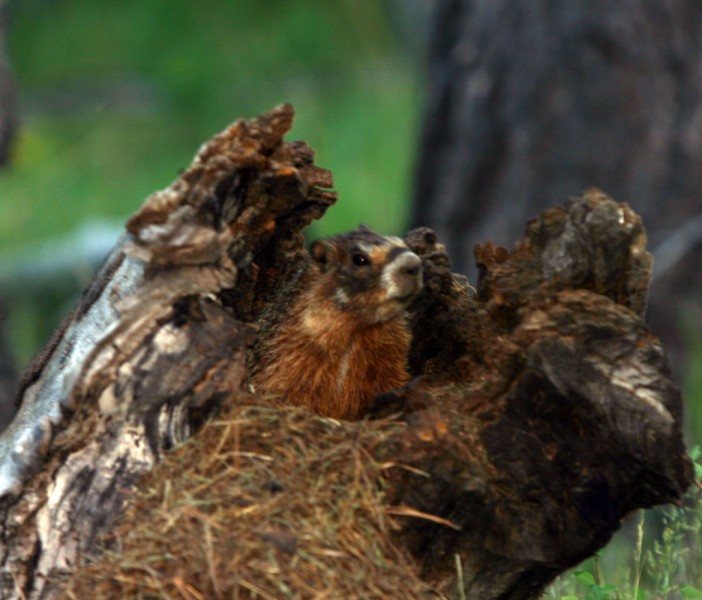What to do with Woodchucks?
This post may contain affiliate links. For more information, see my full disclosures here.
If you garden in the country you more than likely have had your fair share of pests. Not that far out of the city gardeners are plagued by various insects, rabbits, deer, moles, voles, chipmunks, and woodchucks. Last year we had a mystery pest that chomped our Brassicas, nibbled our pea shoots, and all in an orderly fashion-right down the row. At first glance I thought it might be rabbits, but after digging a little deeper I realized we had a woodchuck. It didn’t hurt that I saw him nibbling clover on the hill near the garden.
Woodchucks, also called groundhogs, are rodents belonging to a group of large ground squirrels known as marmots. They live in a burrow and prefer a spot at the woods edge bordering an open area or field. They are voracious eaters and can be seen at all hours of the day from dusk until dawn nibbling away. One tell tale way to determine if you have a woodchuck is if the produce in your garden is eaten in a straight row-they are that tidy.
So what do you do if you have a woodchuck? They can be one of the harder animals/pests to get rid of. I’m not a fan or using toxic chemicals, poison, or trapping. The following is what I did to keep them at bay.
Our vegetable garden is on the smaller side, 16 by 18, so I fenced it in in it’s entirety forming a potager or country kitchen garden. I started with 4 by 4 cedar posts, attached chicken wire to the outside that I also buried at an outward angle 12 inches deep, and then attached cedar fencing to that. It’s important to bury part of the fencing material and at an angle as woodhchucks are great diggers. They can also climb, but I have yet to have trouble with them climbing.
On one side of the outside of my garden I’ve planted my garlic, scallions, and leeks. Most pests/animals do not like onion plants. This row or wall serves as a natural barrier. This row will get moved to a different side of the garden each year as I crop rotate. The front side of the garden is all herbs. Again, most pests/animals don’t like herbs either. The interior of the garden is mixed and planted in sections such as nightshade plants (tomatoes/peppers), Brassicas (Brussels Sprouts/broccoli), etc.
After I finished fencing in the garden I kept a look out for the woodchuck. Once I saw him in the yard, I scared him to see where he ran to and where his burrow might be. I found the hole and flushed the burrow with water. (Woodchucks do not like to get muddy/wet). I then proceeded to fill the hole with rocks, sticks, and soil. I had to do this twice before the woodchuck stopped digging that hole out. I also have two scare crows that I move every so often around the garden. Woodchucks are pretty timid animals, but will get used to something if it’s always in the same place.
The woodchucks are still around, just not in my garden anymore. Alternatively you could also install an electric fence. Since I have small children I did not go with that option. Other people have had luck with small mobiles, wind mills, and other air moving devices. Dogs also make great pest deterrents. If you have a large enough garden you can always plant a little extra for the furry animals of the world. They love clover, so planting a patch of clover far away from the garden might also help.
I don’t mind the woodchucks, I find them rather cute and interesting to watch, as long as they are not in my garden.
What do you do to keep animal pests at bay?

